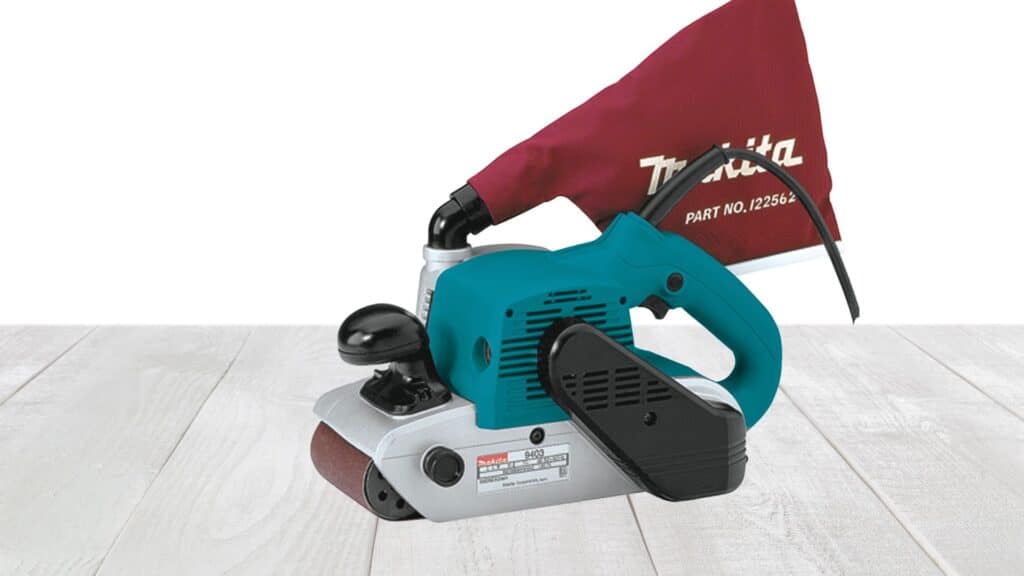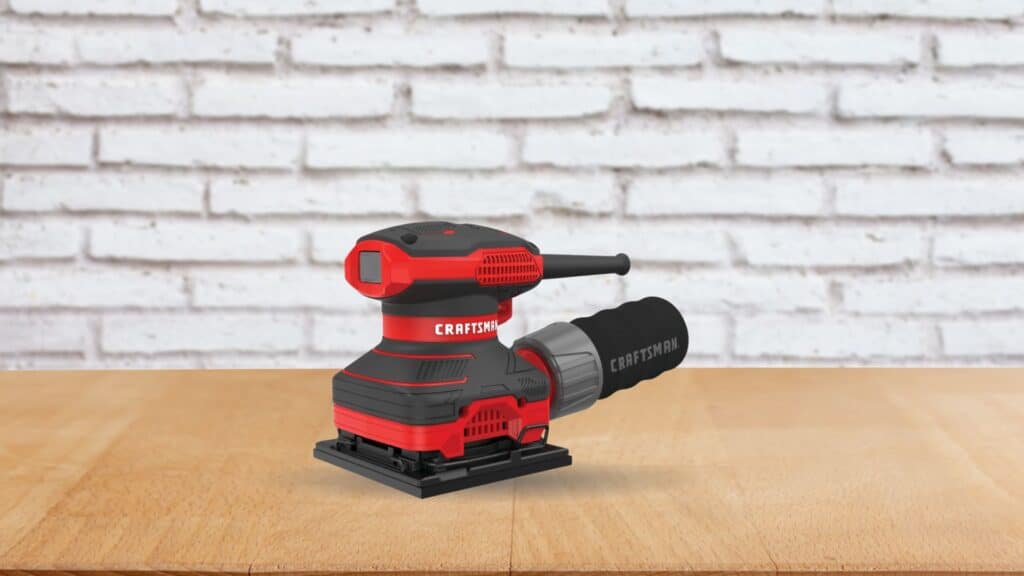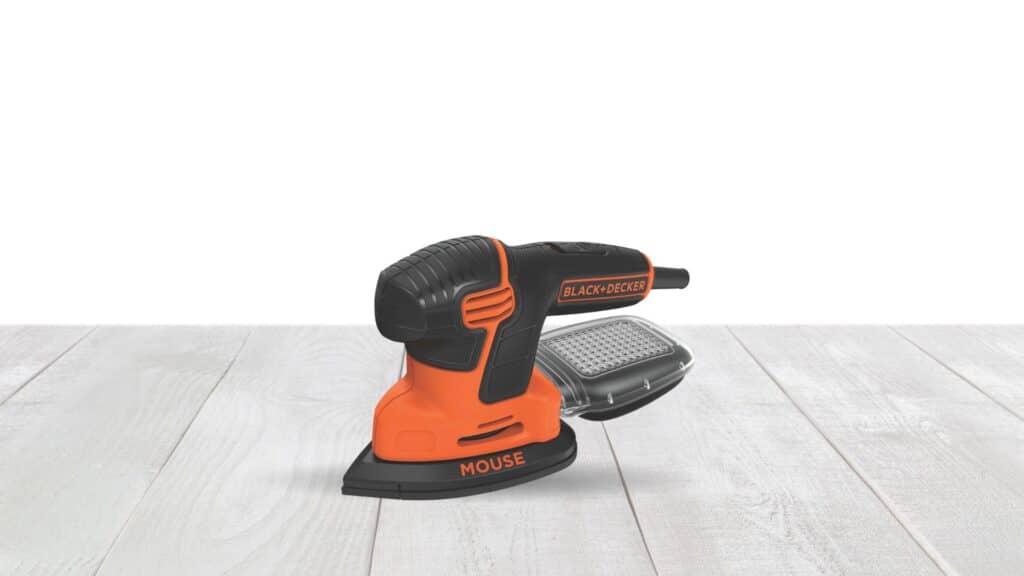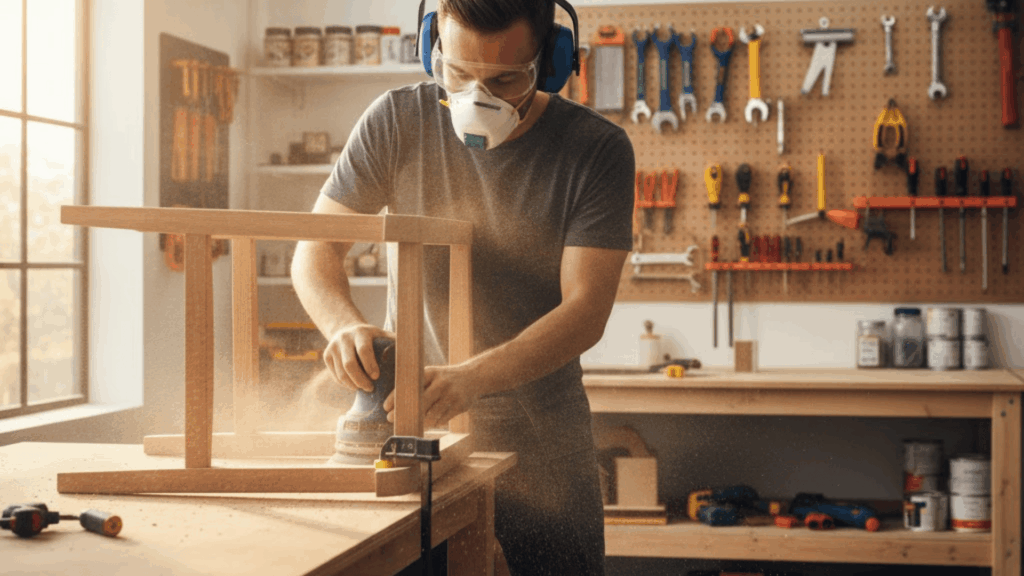Tired of rough, uneven furniture finishes that ruin hours of hard work, no matter how carefully you sand by hand? Finding the best sander for furniture converts tedious projects into smooth, professional results that make your pieces look store-bought instead of homemade.
Different furniture jobs need specific sanders, whether you’re stripping old paint, smoothing raw wood, or adding final touches to delicate surfaces.
I’ve tested popular models and researched what actually works for real furniture projects at every skill level and budget available.
Understanding sander types, features, and safety practices helps you choose tools that match your workshop needs and project demands. Let me show you the best sander for furniture that matches your needs perfectly.
Why You Need the Right Sander for Furniture?
Using the right sander makes furniture projects easier, faster, and produces smoother finishes that look professionally done rather than amateurish.
Proper sanding improves how paint, stain, or finish adheres to wood surfaces, preventing peeling or uneven coverage that ruins your work.
Sanding raw wood requires different techniques than removing old paint or refinishing antique pieces with delicate surfaces that need gentle care.
The right grit sandpaper, tool power level, and sanding motion all work together to create smooth results without damaging wood fibers.
Using the wrong tools leaves swirl marks, gouges, or rough patches that show through the paint and make your furniture look cheap and poorly finished. Choosing the correct sander saves time and frustration while delivering results you’ll be proud to display.
Types of Sanders for Furniture Projects
Different sanders serve specific purposes, and choosing the right one depends on your project size, furniture condition, and experience level. Here’s how each sander type compares to help you pick the best tool for your furniture work:
| Sander Type | Motion | Power Level | Ideal Projects |
|---|---|---|---|
| Orbital Sanders | Gentle circular motion | Low to medium | Final finishing, painted furniture prep |
| Random Orbital Sanders | Rotary + orbital motion | Medium to high | Stripping paint, refinishing, and general sanding |
| Detail/Corner Sanders | Oscillating triangle motion | Low | Intricate furniture, chair spindles, carvings |
| Belt Sanders | Powerful linear motion | High | Tabletops, rough furniture, initial sanding |
| Palm Sanders | Compact orbital motion | Low | Small projects, touch-ups, tight budgets |
Most furniture projects benefit from having at least two sanders for different stages of the job. Start with a more aggressive sander for stripping and finish with a gentler one for smooth surfaces.
Best Sanders for Furniture
I’ve tested and researched the top sanders available to help you choose the right tool for your specific furniture projects and skill level. Here are the best options, ranging from beginner-friendly models to professional-grade tools for different sanding needs:
1. Makita 5″ Random Orbital Sander

This sander offers variable speed control from 4,000 to 12,000 OPM for detailed sanding on different woods. It’s ergonomically designed with a comfortable grip and a front handle to help reduce hand fatigue.
Its dust collection system keeps your workspace clean, but the bag may fill quickly. The tool is slightly larger in size, which could cause discomfort over long tasks, but it delivers consistent performance with minimal vibration for smooth finishes.
- Best for: Woodworkers and carpenters needing reliable, versatile sanding power.
- Ratings: ★★★★☆ 4.3/5
2. Black & Decker Random Orbit Sander

This lightweight sander is beginner-friendly and perfect for small to medium furniture projects. It delivers smooth finishes but lacks the power needed for heavy sanding.
The dust collection is decent but requires frequent emptying, making it suited for short sessions. It has a simple design that offers good grip and control, and it works quietly for light-duty use but may wear down faster with extensive use.
- Best for: DIY users and light furniture sanding.
- Ratings: ★★★☆☆ 3.8/5
3. Makita Belt Sander (4″x24″ or 3″x21″)

Highly powerful and efficient, this belt sander excels at rapid material removal and surface shaping. Its weight and bulk make it less suitable for fine finishing work.
Good dust collection helps control the mess during operation. It’s great for rough sanding phases, but it can cause user fatigue during long use. Its robust motor ensures steady, reliable performance every time.
- Best for: Heavy sanding and fast material removal on large projects.
- Ratings: ★★★★☆ 4.4/5
4. DeWalt 20V Max Cordless Orbital Sander

Cordless and highly mobile, this sander offers variable speed settings and long-lasting battery life. The ergonomic design reduces hand fatigue, and its efficient dust collection makes cleanup easier.
Although pricier, it offers cord-free flexibility and consistent performance, making it popular among pros who need mobility on job sites.
- Best for: Professionals valuing cordless flexibility and power.
- Ratings: ★★★★☆ 4.3/5
5. SKIL Detail Sander

This sander is lightweight and compact, making it excellent for tight corners and detailed edges. Its power is moderate, so it’s not fit for large jobs.
Dust collection works reasonably well, though the bag fills quickly. It’s easy to control and weighs little, but lacks the firmness needed for aggressive sanding.
- Best for: Edge and corner sanding in furniture projects.
- Ratings: ★★★☆☆ 3.9/5
6. Craftsman Palm (Sheet) Sander

Small and easy to use, this sander is perfect for finishing work and smaller projects. It uses replaceable sheet sandpapers, convenient for quick changes.
Though it’s quieter and provides consistent speed, its sanding area is small, which makes it slower for large surfaces. It handles delicate finishes well and is reliable for routine refinishing.
- Best for: Small surface sanding and fine finishing tasks.
- Ratings: ★★★☆☆ 3.7/5
7. Black & Decker 1.2 Amp Detail Sander

This budget sander is lightweight, quiet, and easy to handle. Its vibration is low, which reduces fatigue for longer use.
It’s not suited for big, heavy projects but works well for detailed touch-ups. The dust collection system is basic but sufficient for light sanding jobs. Its ease of use makes it great for beginners.
- Best for: Detailed small sanding and light touch-ups.
- Ratings: ★★★☆☆ 3.6/5
How to Choose the Best Sander for Furniture
Selecting the right sander depends on your project requirements, workspace setup, and how often you plan to use the tool. Here are the key factors to evaluate when choosing the best sander for your furniture projects:
- Consider your project type: Determine if you’re refinishing furniture, removing old paint, or doing light smoothing to match the sander’s power level.
- Power source matters: Choose corded for consistent workshop power or cordless for outdoor flexibility and mobility without outlet limitations nearby.
- Variable speed and control: Look for adjustable speed settings that let you work gently on delicate wood or aggressively on stubborn finishes.
- Dust collection system: Prioritize sanders with effective dust bags or vacuum attachments to keep your workspace clean, safe, and breathable.
- Ergonomics and comfort: Check grip design, vibration control, and weight to ensure comfortable handling during longer projects without hand fatigue.
Evaluating these factors before purchasing ensures you get a sander that matches your skill level and project demands perfectly. The right tool makes furniture sanding faster, easier, and produces professional-quality results you’ll be proud to show off.
Safety Precautions When Using Sanders

Sanders create dust, noise, and vibration that can harm your health if you don’t take proper safety measures during use. Following these essential precautions protects you from injuries and long-term health problems while working on furniture projects:
- Wear safety goggles to protect your eyes from flying wood particles and dust that can cause serious eye injuries.
- Use ear protection when operating loud sanders for extended periods to prevent hearing damage from prolonged noise exposure over time.
- Always wear a dust mask or respirator to avoid breathing harmful wood dust that damages your lungs with repeated exposure.
- Never change sandpaper while the sander is running because this causes injuries from moving parts that can catch fingers instantly.
These safety steps take only seconds but prevent painful injuries and serious health issues that could affect you for life. Never skip protective gear, even for quick jobs, because accidents happen fast and cause permanent damage without warning.
Avoid These Common Furniture Sanding Errors
Even experienced woodworkers make sanding errors that ruin finishes and waste hours of hard work on furniture projects. Knowing these common mistakes helps you avoid frustration and achieve smooth, professional results every time:
| Mistake | Why It’s a Problem | How to Avoid It |
|---|---|---|
| Using too much pressure | Causes gouges, uneven surfaces, and damages wood fibers | Let the sander do the work; apply light, steady pressure only |
| Skipping grits or using dull sandpaper | Creates scratches that show through the finish and requires more work | Progress through grits gradually; replace sandpaper when worn |
| Forgetting to clean before staining | Dust prevents proper adhesion, causing a blotchy or uneven finish | Wipe surfaces with a tack cloth or a damp rag before finishing |
Avoiding these mistakes saves time, materials, and ensures your furniture looks professionally finished rather than amateurish and rushed. Take your time with each step and follow proper sanding techniques for results that last and look beautiful.
That’s a Wrap
Choosing the best sander for furniture depends on balancing your project type, budget, workspace setup, and how often you tackle refinishing jobs.
I hope this breakdown helped you understand which sander type suits your specific needs, whether you’re a beginner or experienced woodworker.
Always remember that investing in quality tools with good dust collection, variable speed, and comfortable grips pays off through better results.
Your furniture projects deserve sanders that make the job easier, not ones that fight you with poor performance or uncomfortable handling.
Safety matters just as much as results, so never skip protective gear even for quick jobs. What’s your biggest challenge when sanding furniture? Share your experiences in the comments below.














